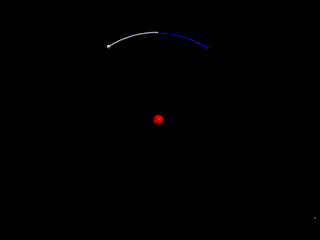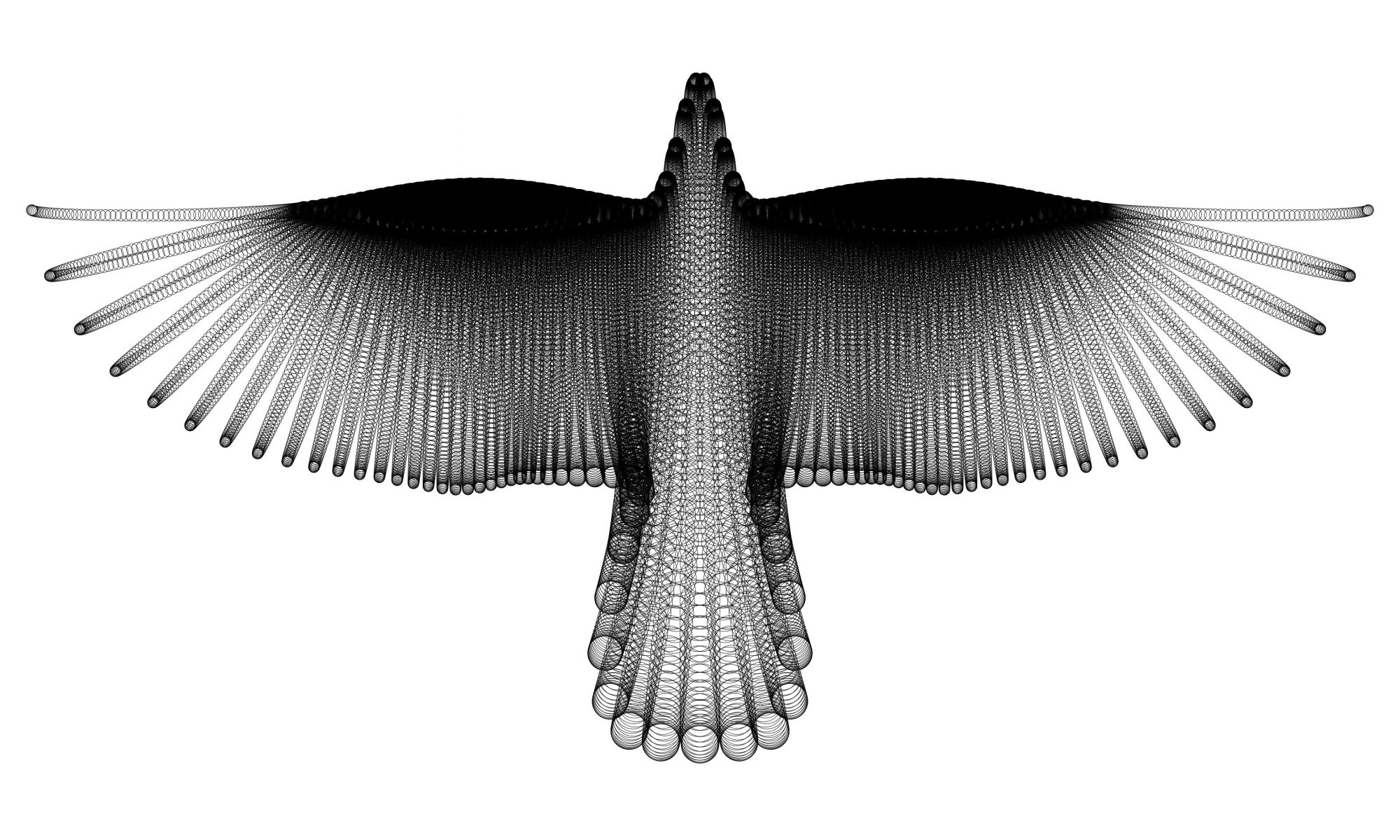Hyperoperation Notation 2.0
PDF Result:
hyperoperator_neu
Source: (change file ending to .tex before compile)
hyperoperator_neu
H2+
# from math import *
# from visual import *
# from visual.graph import *
from vpython import *
# import vpython
scene.fullscreen = True
G = 100
# edit initial conditions here
##########
spheres = [
sphere(pos=vector(0,0,0),radius =.1,color=color.blue,charge=-1,mass=1,velocity=vector(0,-5,0),a = vector(0,0,0)),
sphere(pos=vector(1,0,-1),radius=.3,color=color.red,charge=1,mass=7200,velocity=vector(.1,0,0),a=vector(0,0,0)),
#sphere(pos=vector(0,12,0),radius=.08,color=color.green,mass=sqrt(4),velocity=vector(1.2,0,0.6),a=vector(0,0,0),trail=curve(color=color.green)),
sphere(pos=vector(-1,0,1),radius=.3,color=color.red,charge=1,mass=7200,velocity=vector(-.1,0,0),a=vector(0,0,0))
#sphere(pos=vector(0,28,0),radius=.4,color=color.orange,mass=sqrt(80),velocity=vector(0.7,0,0.4),a=vector(0,0,0),trail=curve(color=color.orange)),
#sphere(pos=vector(0,32,0),radius=0.2,color=color.white,mass=-sqrt(10),velocity=vector(1.5,0,0.4),a=vector(0,0,0),trail=curve(color=color.white))
]
#print(spheres[0].a)
#print(len(spheres))
def acceleration1on2(sphere2,sphere1):
r = sphere2.pos - sphere1.pos
r_mag = mag(r)
normal_r = norm(r)
g = ((G*sphere1.charge*sphere2.charge)/pow(r_mag,2))/sphere2.mass*normal_r
#print(g)
return g
t = 0
dt = .01
while 1:
rate(1000)
for i in spheres:
i.a = vector(0,0,0)
soi = vector(0,0,0)
for j in spheres:
if i!=j:
i.a = i.a + acceleration1on2(i,j)
for i in spheres:
#print(i.velocity)
i.velocity = i.velocity + i.a *dt
i.pos = i.pos+i.velocity*dt
#print(i.a)
#scene.center=vector(spheres[0].pos.x,spheres[0].pos.y,spheres[0].pos.z)
# print(i.a)
Delayed Newton Force (DNF)
runs in python 3 after
pip3 install vpython
# from math import *
# from visual import *
# from visual.graph import *
from vpython import *
# import vpython
scene.fullscreen = True
G = 10
c = 100
spheres = [
sphere(pos=vector(0,0,0),radius =6,color=color.red,charge=1000,mass=7200,velocity=vector(0,0,0),a = vector(0,0,0),trail=curve(color=color.red,ratain=1000)),
sphere(pos=vector(0,100,-1),radius=2,color=color.blue,charge=-1,mass=1,velocity=vector(10,0,0),a=vector(0,0,0),trail=curve(color=color.blue,retain=1000)),
#sphere(pos=vector(0,12,0),radius=.08,color=color.green,mass=sqrt(4),velocity=vector(1.2,0,0.6),a=vector(0,0,0),trail=curve(color=color.green)),
sphere(pos=vector(0,100,1),radius=2,color=color.white,charge=-1,mass=1,velocity=vector(-10,0,0),a=vector(0,0,0),trail=curve(color=color.white, retain=1000)),
#sphere(pos=vector(0,28,0),radius=.4,color=color.orange,mass=sqrt(80),velocity=vector(0.7,0,0.4),a=vector(0,0,0),trail=curve(color=color.orange)),
#sphere(pos=vector(0,32,0),radius=0.2,color=color.white,mass=-sqrt(10),velocity=vector(1.5,0,0.4),a=vector(0,0,0),trail=curve(color=color.white))
]
#print(spheres[0].a)
#print(len(spheres))
# undelayed flying start
def acceleration1on2(sphere2,sphere1):
r = sphere2.pos - sphere1.pos
return ((G*sphere1.charge*sphere2.charge)/pow(mag(r),2))/sphere2.mass*norm(r)
t = 0
dt = .01
for index in range(1,1001):
rate(2500)
for i in spheres:
i.a = vector(0,0,0)
for j in spheres:
if i!=j:
i.a = i.a + acceleration1on2(i,j)
for i in spheres:
i.velocity = i.velocity + i.a *dt
i.pos = i.pos+i.velocity*dt
i.trail.append(pos=i.pos)
def acceleration1on2(sphere2,sphere1):
npoints= sphere1.trail.npoints
should_be_zero = 100000000
should_be_zero_previous = 10000000000000
for n in range(npoints):
r = sphere2.pos - sphere1.trail.point(npoints-n-1)["pos"]
r_mag = mag(r)
should_be_zero = abs( r_mag - c*n*dt )
if ( should_be_zero > should_be_zero_previous ):
normal_r = norm(r)
break
should_be_zero_previous = should_be_zero
return ( (G*sphere1.charge*sphere2.charge) /pow(r_mag,2) ) /sphere2.mass * normal_r
while 1:
rate(250)
for i in spheres:
i.a = vector(0,0,0)
for j in spheres:
if i!=j:
i.a = i.a + acceleration1on2(i,j)
for i in spheres:
i.velocity = i.velocity + i.a *dt
i.pos = i.pos+i.velocity*dt
i.trail.append(pos=i.pos)
Alternative Static Front Page
minimalist web publishing
with just a text file in the apache web directory:
The result of the previous post should look something like this:

3D Charge Simulator
Paste the code at the end of this post here:
https://www.beautifulmathuncensored.de/static/GlowScript/GlowScript.html
And press “Run”.
Edit “pos” (position), “velocity”, “charge” and “mass” parameters to simulate a different set of charged particles.
Add a sphere with all the parameters (followed by a “,”) to add an additional charged particle to the simulation.
I hope people will play around and have fun!
(If you have questions, you can ask in the comments.)
Code:
# from math import *
# from visual import *
# from visual.graph import *
from vpython import *
# import vpython
scene.fullscreen = True
G = 10
# edit initial conditions here
##########
spheres = [
sphere(pos=vector(0,0,0),radius =6,color=color.red,charge=1000,mass=7200,velocity=vector(0,0,0),a = vector(0,0,0),trail=curve(color=color.red)),
sphere(pos=vector(0,100,-1),radius=2,color=color.blue,charge=-1,mass=1,velocity=vector(10,0,0),a=vector(0,0,0),trail=curve(color=color.blue)),
#sphere(pos=vector(0,12,0),radius=.08,color=color.green,mass=sqrt(4),velocity=vector(1.2,0,0.6),a=vector(0,0,0),trail=curve(color=color.green)),
sphere(pos=vector(0,100,1),radius=2,color=color.white,charge=-1,mass=1,velocity=vector(-10,0,0),a=vector(0,0,0),trail=curve(color=color.white)),
#sphere(pos=vector(0,28,0),radius=.4,color=color.orange,mass=sqrt(80),velocity=vector(0.7,0,0.4),a=vector(0,0,0),trail=curve(color=color.orange)),
#sphere(pos=vector(0,32,0),radius=0.2,color=color.white,mass=-sqrt(10),velocity=vector(1.5,0,0.4),a=vector(0,0,0),trail=curve(color=color.white))
]
#print(spheres[0].a)
#print(len(spheres))
def acceleration1on2(sphere2,sphere1):
r = sphere2.pos - sphere1.pos
r_mag = mag(r)
normal_r = norm(r)
g = ((G*sphere1.charge*sphere2.charge)/pow(r_mag,2))/sphere2.mass*normal_r
#print(g)
return g
t = 0
dt = .01
while 1:
rate(100)
for i in spheres:
i.a = vector(0,0,0)
soi = vector(0,0,0)
for j in spheres:
if i!=j:
i.a = i.a + acceleration1on2(i,j)
for i in spheres:
#print(i.velocity)
i.velocity = i.velocity + i.a *dt
i.pos = i.pos+i.velocity*dt
#print(i.a)
i.trail.append(pos=i.pos)
scene.center=vector(spheres[0].pos.x,spheres[0].pos.y,spheres[0].pos.z)
# print(i.a)
New number set
Def.: |H is the set of all nested hyperoperation and inverse-hyperoperation expressions with the natural numbers (without 0) as base arguments.
